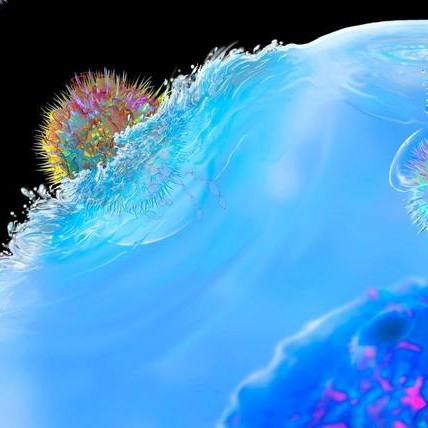-
Biotherapeutics
Reimagining stem cell cultivation
Mayo Clinic has discovered how to microencapsulate pluripotent stem cells to potentially make them easier and less expensive to process and more effective for fighting disease. This research by Alexander Revzin, Ph.D., a Mayo Clinic biomedical engineer, is published in Bioactive Materials.
"Human pluripotent stem cells hold considerable promise as a source of adult cells
for treatment of diseases ranging from diabetes to liver failure," says Dr. Revzin, senior author of the study. "However, maintenance and differentiation of stem cells have been challenges that limit clinical translation. The standard method of culturing stem cells is an expensive and sensitive process that results in a product of variable quality."
Dr. Revzin's research seeks to address hurdles of cost and scalability of human pluripotent stem cells. In a radical departure from a standard way of culturing stem cells, Dr. Revzin's team discovered how to encapsulate pluripotent stem cells in a bioactive gel. That helps organize stem cells into 3D clusters that also contain growth factors —proteins that drive stem cell differentiation. Cell differentiation is the process of becoming cells with more specific function, such as blood cells, brain cells, heart muscle cells, or bone cells that could trigger cell repair.
Microencapsulation resulted in a severalfold reduction in the cost of stem cell differentiation. Additional benefits included protection against damage during cultivation, as well as ease of handling and preservation.
Regenerative medicine seeks to repair, replace or restore diseased cells, tissues or organs. Mayo Clinic's Center for Regenerative Medicine is a leader in this evolving field and supports Dr. Revzin's research as part of its objective of bringing new cures to the practice.
Facilities like Mayo Clinic's Regenerative Medicine Biotrust provide the technology to redirect human-induced pluripotent stem cells — similar to turning the clock back — to become embryoniclike stem cells that are capable of differentiating into any type of cell or tissue in the body. These high-tech regenerative tools are used to recreate disorders like multiple sclerosis in a laboratory dish, where investigators can track disease progression and test new therapies to stop it.

Human-induced pluripotent stem cells can be directed to become embryoniclike stem cells capable of differentiating into any type of cell or tissue in the body.
This encapsulation technology may improve efficiency of stem cell differentiation while reducing their cost and may have long-term application to clinical care.
"We envision using this encapsulation strategy for purposes of personalized medicine where patients' own induced pluripotent stem cells will be differentiated and used for testing therapies," says Dr. Revzin. "We also foresee employing this cultivation strategy for large-scale biomanufacturing of stem cells for treatment of patients."
The team is working to demonstrate the utility of microencapsulation technology for driving liver- and pancreas-specific differentiation of stem cells.
This research was supported in part by grants from the Center for Regenerative Medicine, J.W. Kieckhefer Foundation, Khalifa Bin Zayed Al Nahyan Foundation, Regenerative Medicine Minnesota (RMM 101617 TR 004) and National Institutes of Health (DK107255).
###








